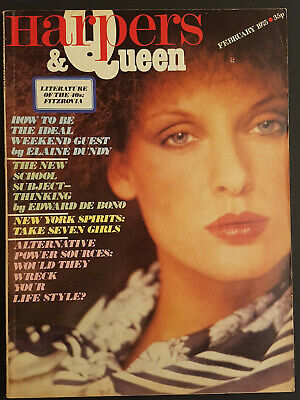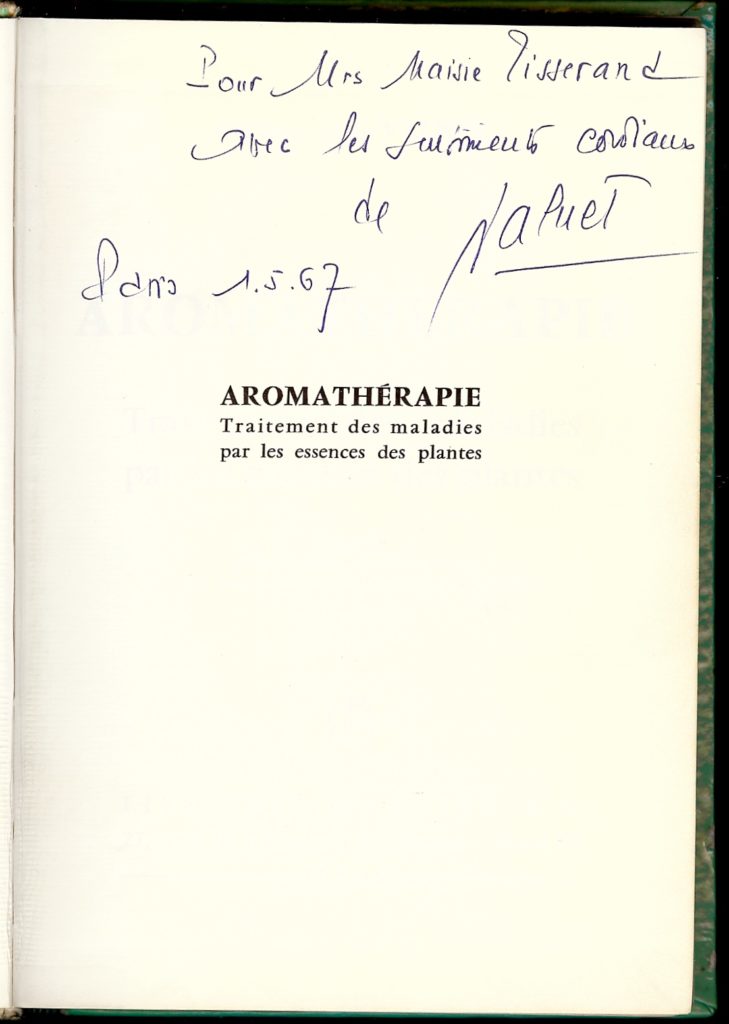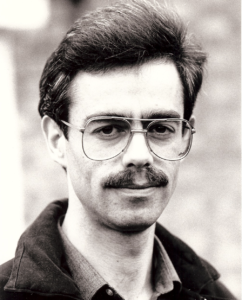Aromatherapy has changed dramatically over the past 50 years, and I have either seen or been part of many of those changes. My aromatherapy career began in the late 1960s when I trained as a massage therapist. By 1980, I had a part-time practice as an aromatherapist, I had written my first book, The Art of Aromatherapy (also the first book on the subject in English) and I had started selling essential oils (the first retail essential oil brand in the UK). But before all that was a decade punctuated by serendipity and hard work. Here I look back on some important events from those early days.
1967 – Jean Valnet’s book
I am proud of my French heritage. My father was born in London to French parents, so his first language was French, and he went to a special school for non-English speaking children. But he spent his whole life in the UK, so was basically bilingual. In order to not lose touch with the language, he would listen to French radio stations almost daily. The only time my father traveled to France was in 1944 after the liberation of Paris, when he was “loaned” to the US Army as a French/English interpreter. My mother spoke no French, and I was not raised bilingual, but learned French at school.
In the early 1960s my mother trained as an esthetician. She also trained as an aromatherapist at Micheline Arcier’s school (Eve Taylor O.B.E. was in the same class). Throughout the 60s and most of the 70s, this was the only training course in the UK, and it was based on information Micheline had obtained from Marguerite Maury. Maury’s approach was a mix of energetics and skin care,
In May 1967 (I was 18) my mother travelled to Paris to hear a talk by Dr. Jean Valnet, and came home with a signed copy of his book, Aromathérapie, which had been published in 1964. (Since she didn’t understand French, I wonder if she got
it just to have a signed copy, or if she really had me in mind. This was also the only time she ever left the UK.) Because I understood French, I could read the book, and it really grabbed my interest. I already knew that aromatherapy existed, but I did not realize that it could be more than beauty therapy – it was also natural medicine! This was a revelation. I was fascinated, especially since so little seemed to be known about essential oils, and Valnet’s book became my aromatherapy bible – I devoured that book!
None of this would have happened if I could not read French. I might have still got into aromatherapy, but I suspect not. Some years later I called Dr. Valnet in Paris and he picked up the phone. I just wanted to let him know how much I admired and respected him and how much his book had influenced my aromatherapy career. We talked for only about 10 minutes, as his English and my French were both pretty shaky, so mostly he spoke French and I spoke English. To my surprise and delight he knew who I was and told me he also respected my work.
1975 – The Harper’s & Queen article
Five years before calling Dr. Valnet I decided to try translating his book, but after about 10 pages I gave up – it was just too difficult. (As my translator/interpreter wife would tell you, understanding text and translating it are two very different things.) And anyway why was I doing this? Who was going to publish it? I didn’t really think it through, I was just so keen to see the book published in English!
At about the same time I was contacted by the health and beauty editor of Harper’s & Queen – Leslie Kenton – who said she’d like to interview me about aromatherapy. A few days later I walked into the Harper’s & Queen offices, and was directed to a higher level. The elevator doors opened, and I was met by a smiling blonde dressed all in white, flowing clothes. Leslie escorted me – through what looked like every open-plan newspaper office you have ever seen in movies – to her walled-in, glass office.
 She asked questions, I answered and Leslie took notes, for maybe 20-30 minutes. When we were done, I mentioned that I had written a few pages about aromatherapy that she might find useful for reference. Some weeks before I had written a few pages thinking that I could possibly make it into an article for a health magazine. It contained just about everything I knew about aromatherapy and essential oils at that point!
She asked questions, I answered and Leslie took notes, for maybe 20-30 minutes. When we were done, I mentioned that I had written a few pages about aromatherapy that she might find useful for reference. Some weeks before I had written a few pages thinking that I could possibly make it into an article for a health magazine. It contained just about everything I knew about aromatherapy and essential oils at that point!
Leslie asked if she could photocopy it, and then she escorted me back to the elevator. Just as the doors were closing, she winked. I had no idea what the wink was about, but I waited eagerly to see how my interview would turn out. Three months later the issue was published, and there, with Leslie Kenton’s name on it, was my article on aromatherapy – not one word had been changed. At first I felt angry and betrayed, but at the end of the article were the contact details for the Aromatic Oil Company – the essential oil business I had started the previous year. Over the following few weeks I received more than 3,000 letters requesting a mail order catalogue, and this really helped launch the business.
1975 – Meeting Ian Miller
After attempting, and failing, to translate Valnet’s book, and after seeing my article in print, I started to think that maybe I could write my own book. I knew that there was a publisher called C.W. Daniel that specialized in alternative medicine books, so I decided to contact them. I was delighted to find that their office was about 1 mile from where I was living in North London, I just needed to walk down the quite long and steep hill that Muswell Hill is named for.
When I got there it just looked like another row house, but I knocked on the door and the owner, Ian Miller, welcomed me like an old friend and invited me in for a cup of tea. Once were were ensconced in his office, I asked him if he would like to publish a book on aromatherapy. He looked doubtful and explained that he had recently signed a contract to translate and publish another book on the same subject.
I knew that this could only be Dr. Valnet’s book – there simply wasn’t anything else – but Ian seemed to think I was psychic. I explained that while Valnet’s book was about the medical side of aromatherapy, my book would be more about the sense of smell, and massage, and other things, though I did not yet have a book title. Anyway, I left Ian’s office with a signed contract!
Near Muswell Hill where I then lived is an area of London called Archway, and there’s an Archway Archery Club. One day I was walking past, saw the sign for Archway Archery. I started thinking about the “AA” alliteration and this gave me the idea to call my book The Art of Aromatherapy. It then seemed logical that Valnet’s book should be called The Practice of Aromatherapy.
This was a time when there was no internet, and no easy access to research. To find what there was, I visited various libraries in London. It was a time-consuming process. Most of the research was in English, but some was in French (not a problem), German (definitely a problem) and Bulgarian (huge problem). I spent many hours traveling on slow London buses, waiting for photocopies to be delivered to my seat in a library, and pouring over the results of my academic excavations. I was on a mission to dig into the mysteries of aromatherapy! A couple of years went by.
One day I called Ian Miller from a payphone in the British Museum Library. I told him where I was, what I was working on, and that the manuscript was still some way off. Ian said: “Listen to me Robert, I want you to put the phone down, go home, and finish writing the book!” Eventually, I did.
In 1977 The Art of Aromatherapy was published and, though not suddenly, it changed my life in a big way. Within a couple of years I had done many more press interviews, a couple of radio shows and one tv show, and I became known as the go-to aromatherapy expert. Translations of the book later appeared in Bulgarian, Czech, Dutch, German, Hebrew, Italian, Japanese, Mandarin, Portuguese, Romanian and Spanish, which helped introduce aromatherapy to many other countries and languages.
According to the Beauty & Health issue of Vogue’s summer 1984 edition, “Britain now has its own well-established tradition of lay aromatherapists. One of the most dedicated is Robert Tisserand, whose book The Art of Aromatherapy has been the standard reference work since it was published in 1977.”
Three years later, the translation of Valnet’s book finally came out, and I received a brief thank-you note from Valnet, via Ian Miller. A lot has happened since then but that first decade was what determined my future. I’m grateful to my parents, to Leslie Kenton, to Jean Valnet and to Ian Miller, for contributing to what with hindsight was an ideal synergy of circumstance and trust.






quite a Fascinating path, thanks for sharing, Robert.
You’re welcome!
This is a fascinating insight, thank you for sharing it. It’s always nice to see / hear how the history of our Profession was made!
Thank you Lindsey, good to know you enjoyed it!
Thank you robert for sharing your history — the unique circumstances that evolved around you, Unfolding incredible favour and future.
As a recent ‘Safety’ student since 2019, i could only see your present role and history of A book on safety, unaware of what took place Foundational to Meeting that need.
This was a wonderful insight!
Hi Rosemary,
I’m glad you enjoyed my story, and thank you for your positive feedback!
What an Amazing Journey and so many connections to Languages and Translation (I’m a MFL teacher, translator and Aromatherapist :). I’ve got three of your Books, and one of them is the translation of Gattefosse’s Book. I’m curious how did you manage to translate it (and not the book by Valnet?). Did you eventually master french?
Thank you for your kind comments! I did not actually translate Gattefosse’s book, I just edited it with occasional notes.
Thank you for this wonderful journey back into the seventies! I also enjoyed your wonderful presentation at Botanica2020.
I worked in a tiny german bookshop in Wiesbaden at around 1985, there I sold your translation (I think it was Bauer Verlag). We also sold essential oils, but even at my beginner’s stage I could sense that they were of inferior quality. But your book along with the soon available books of Martin Henglein (recently deceased) and Susanne Fischer-Rizzi helped me to source the best oils from then one of the few companies offering the first organic essential oils (Primavera).
Soon I was a student of Shirley Price, gave my first courses and wrote my first (of so far 10) book(s). This reference book will be published in it’s 7th revised edition this summer (I gave you the 6th edition at Botanica2018, sorry for the German language!!!). Dietrich Wabner wrote the first foreword, we became good friends as I later lived in munich like him.
So in my personal aromatic history -y-o-u- were very influential, and I’d like to thank you for that!